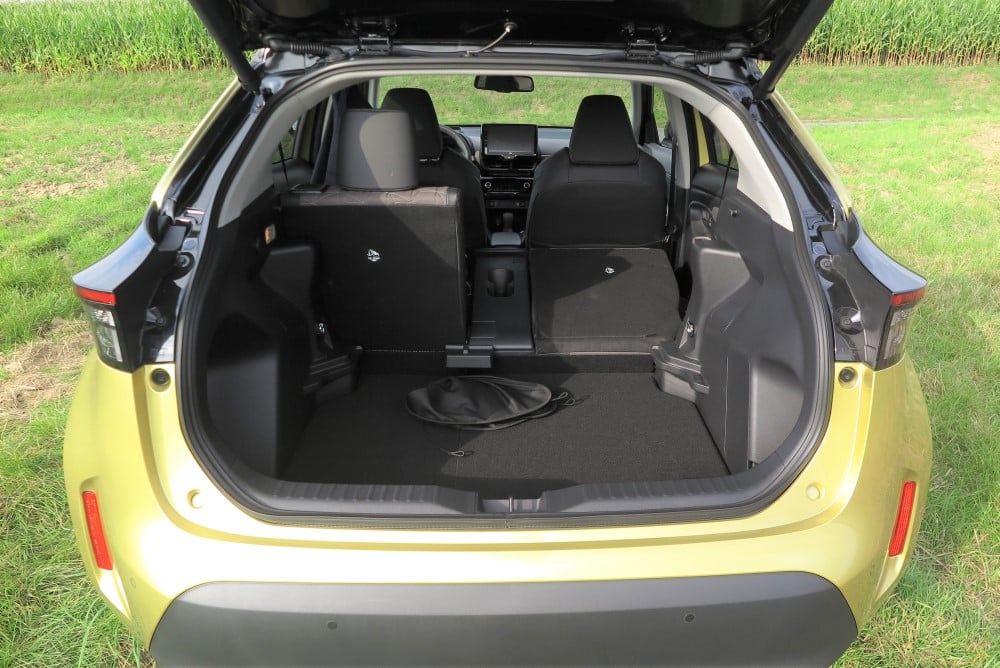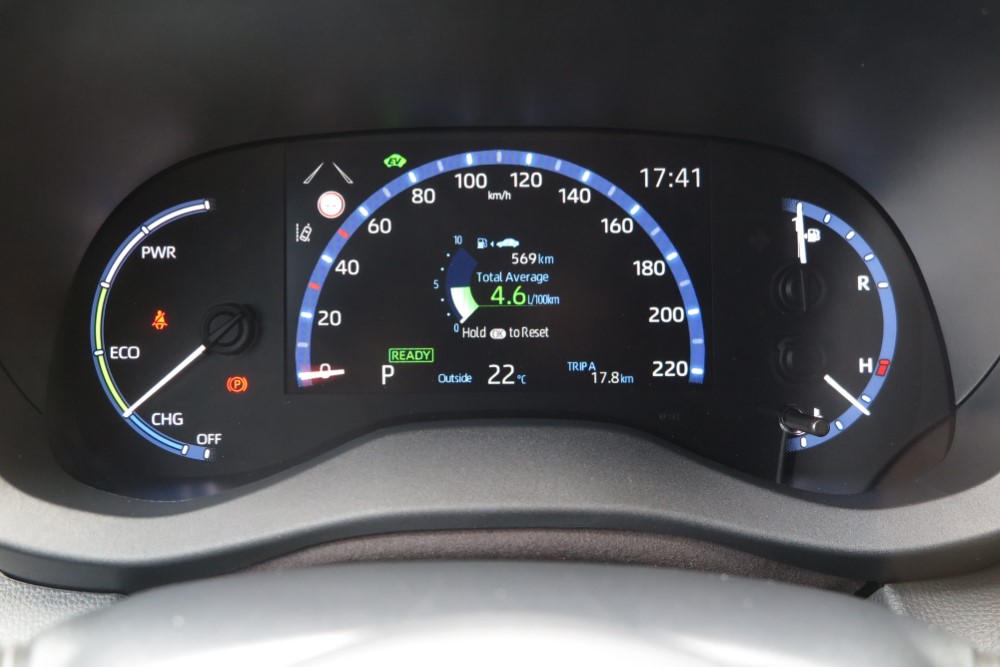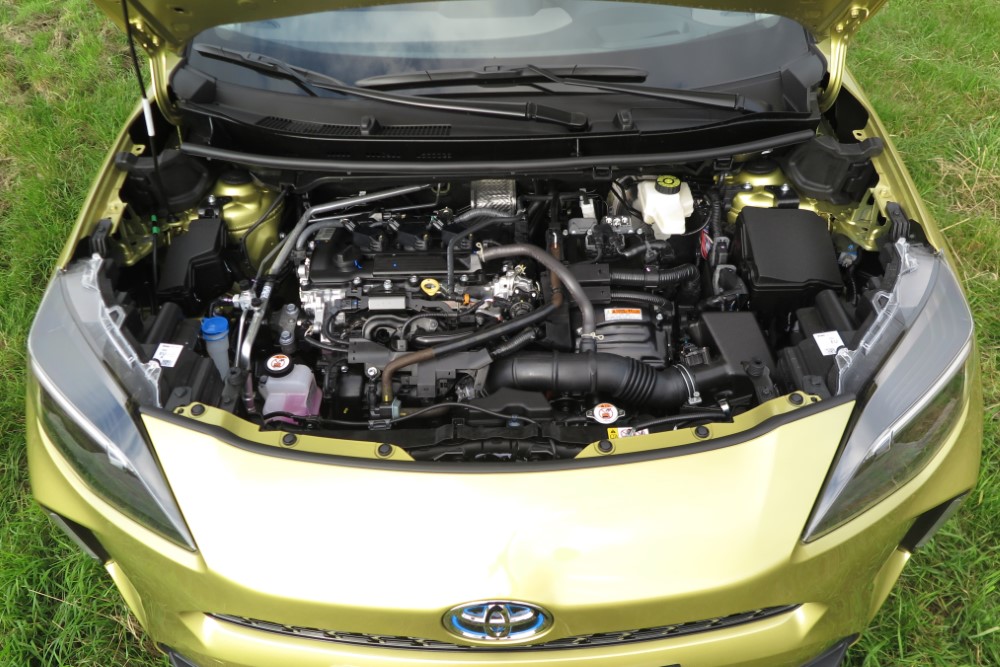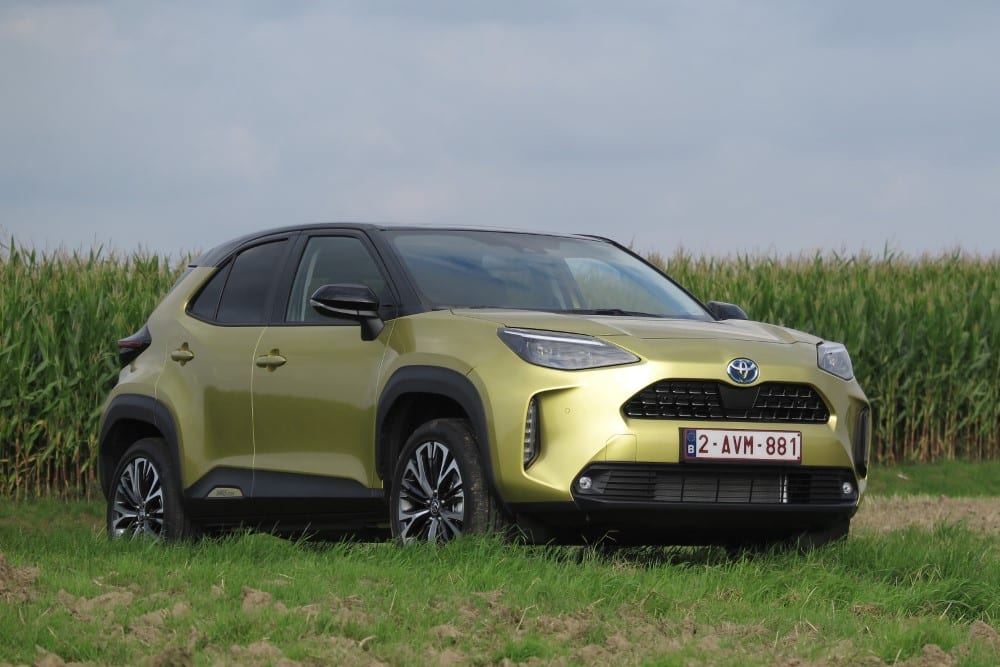Text by Toni Jalovaara
Small SUVs or compact SUVs, as importers prefer to call them, are a fast-growing car category all over the world. Sales of small cars are struggling in Europe, where their taller “SUV-like” sister models are much more appealing to buyers.
Toyota has so far not been involved in that category, or at least has not been in the game for a while. Those well versed in the automotive world may remember the Toyota Urban Cruiser from a decade ago. It was actually a perfectly good car, but the Urban Cruiser was ahead of its time and the yen’s soaring exchange rate pushed the price too high.

The Urban Cruiser has one thing in common with the new Yaris Cross, as that ancestor was also built on the Yaris chassis. There’s nothing to complain about, as the new Yaris won the Car of the Year 2021 award, so at least the media think it’s a great car. Finnish buyers agree, as after eight months the Yaris is second in passenger car registrations. Only the Corolla is ahead.
The basic structure is common to the extent that even the 2.56-metre wheelbase has not been stretched. However, the Yaris Cross has a much larger body than the Yaris. It is 24 centimetres long, almost ten centimetres high and a couple of centimetres wider.
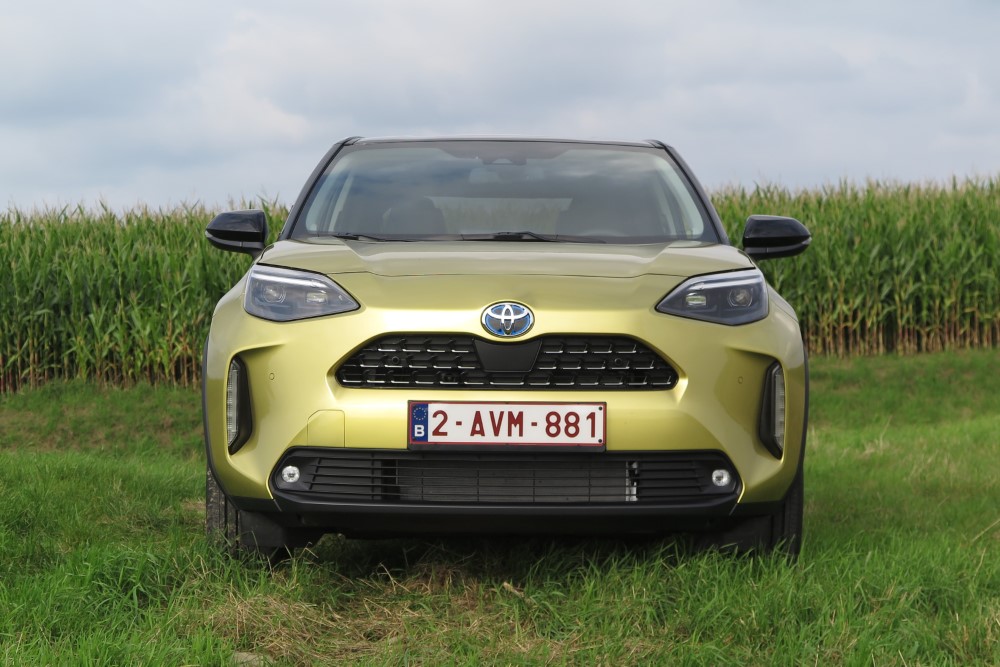
That considerable increase in height explains why the wheelbase did not need to be made longer. The Yaris Cross sits higher than the passenger car in an upright position. So the space is taken up from the top, in a way.
So there’s plenty of space both in front and behind. Access to the back seat is a bit of a struggle, as the doors are not very large and would prefer to open to a larger angle.
There is a good amount of space for luggage for its size, and the equipment list includes a power tailgate in the more luxurious, or more expensive, versions. On top of that, there’s one that opens with a wave of the foot under the bumper.

Lance Scott, who led the design of the Yaris Cross, says he wanted to keep the car compact. However, the aim was to create a strong shape, and it’s easy to find familiar features from the larger RAV4 SUV. A high ground clearance of 20 centimetres and wheels that are always at least 16-inches wide set the tone.
Toyota’s representatives describe the Yaris Cross’ ride as reliable and natural. These words are a good description of Toyota’s basic philosophy, which the Yaris Cross puts into practice. Nothing major to complain about, but no wild moments of admiration either.
The biggest criticisms are actually about the tyres, as the cars tested were fitted with 18-inch 50-series tyres. The importer estimates that the top-spec Yaris Crosses fitted with them account for only a tenth of total sales.
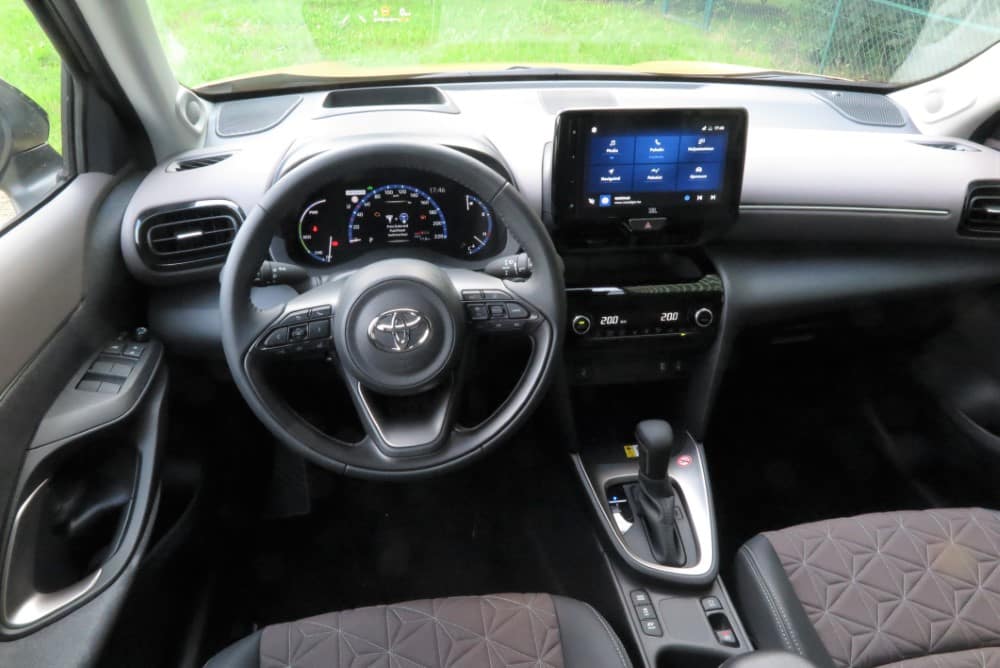
At that point, it’s worth compromising a little on looks for your own comfort. The ride is more comfortable and quieter on smaller wheels.
It’s by no means explosively fast, as we always have a 1.5 Hybrid at the front of the Yaris Cross. In other words, a combination of a 1.5-litre petrol engine and an electric motor, with a gear that is always automatically engaged.
It’s easy to get going, with zero to 60 km/h in under 12 seconds in both front and all-wheel drive. In normal driving, the Yaris Cross feels quicker than its power, but of course a five-passenger load and something to tow behind (up to 750 kilos) eat into performance.

If the Yaris Cross isn’t a rocket, on the other hand, fuel consumption is very modest. I’ve driven four different examples on different routes, and in each case the consumption has been below the official norm. I have not yet seen a figure starting at five on the trip computer, but I have managed to get under four litres per hundred without trying.
Four-wheel drive available
What sets the new Yaris Cross apart from the masses is that it is also available with four-wheel drive. For Toyota, that means a small (5.3 hp and 52 Nm) electric motor at the rear to provide power to the rear wheels when needed. There is no mechanical link between the front and rear wheels, but the electronics supply the power.
With four-wheel drive, the suspension of the rear wheels is different and the car feels slightly larger and stiffer. Front-wheel drive is the more nimble and fun feeling of the twin.
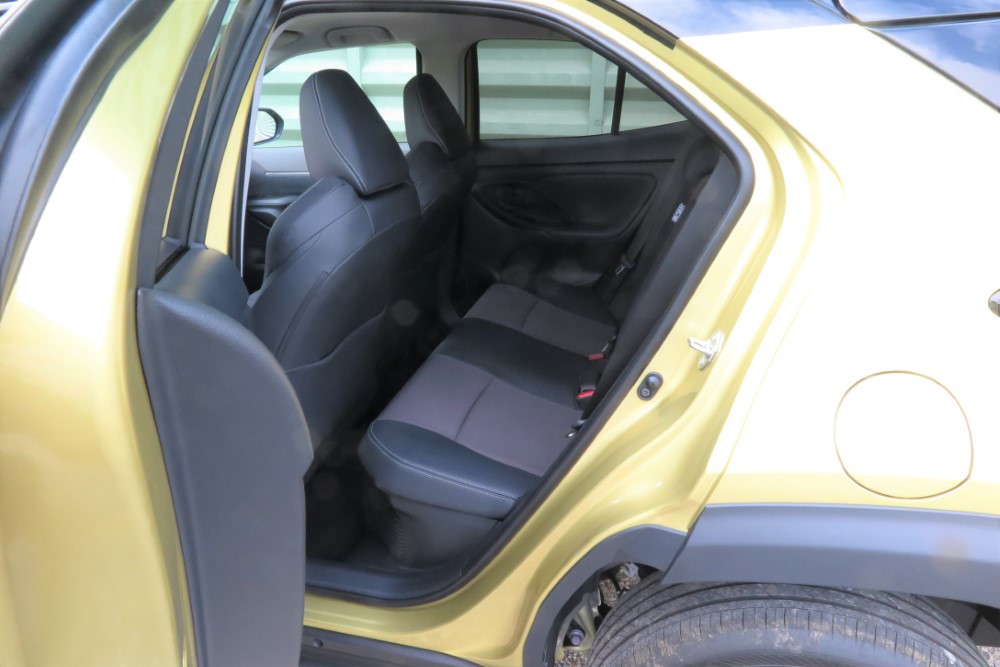
You can really choose the equipment according to your wallet. The Yaris Cross doesn’t even come in the same price from (Life) version as the regular Yaris, which means there’s quite a lot of stuff even in the cheapest version, priced at €25,555. From there you go up in increments of around €3 000. Four-wheel drive is available in the Intense trim level of the second tier for just under €3 000 more.
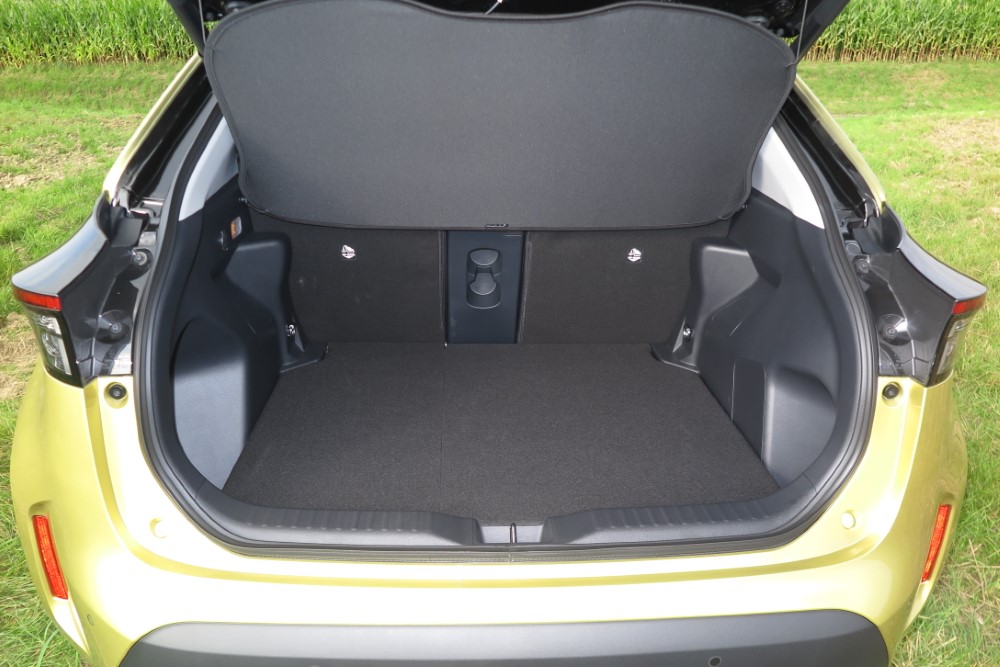
Toyota has a strong belief in the success of the Yaris Cross in both Europe and Finland. The French factory is set to produce 150,000 units next year. More than 2,000 of these are expected to find a buyer in Finland, which would give Toyota a clear number one position in the small SUV market. With this package, the target is quite realistic.
Toyota Yaris Cross
- Engine: 1.5 l, 4-cylinder, petrol
- Combustion engine power: 92 hp / 68 kW. @ 5500 rpm.
- Combustion engine torque: 120 Nm. @ 3600-4800 rpm.
- Electric motor power: 59 kW.
- Electric motor torque: 141 Nm.
- Total maximum power: 116 hp.
- Total maximum torque: not specified Nm.
- Driving battery capacity: 0,774 kWh
- Acceleration: 11.2/11.8 sec (0-100 km/h)
- Drive mode: front-wheel drive/all-wheel drive
- Starting price: from EUR 25 555
